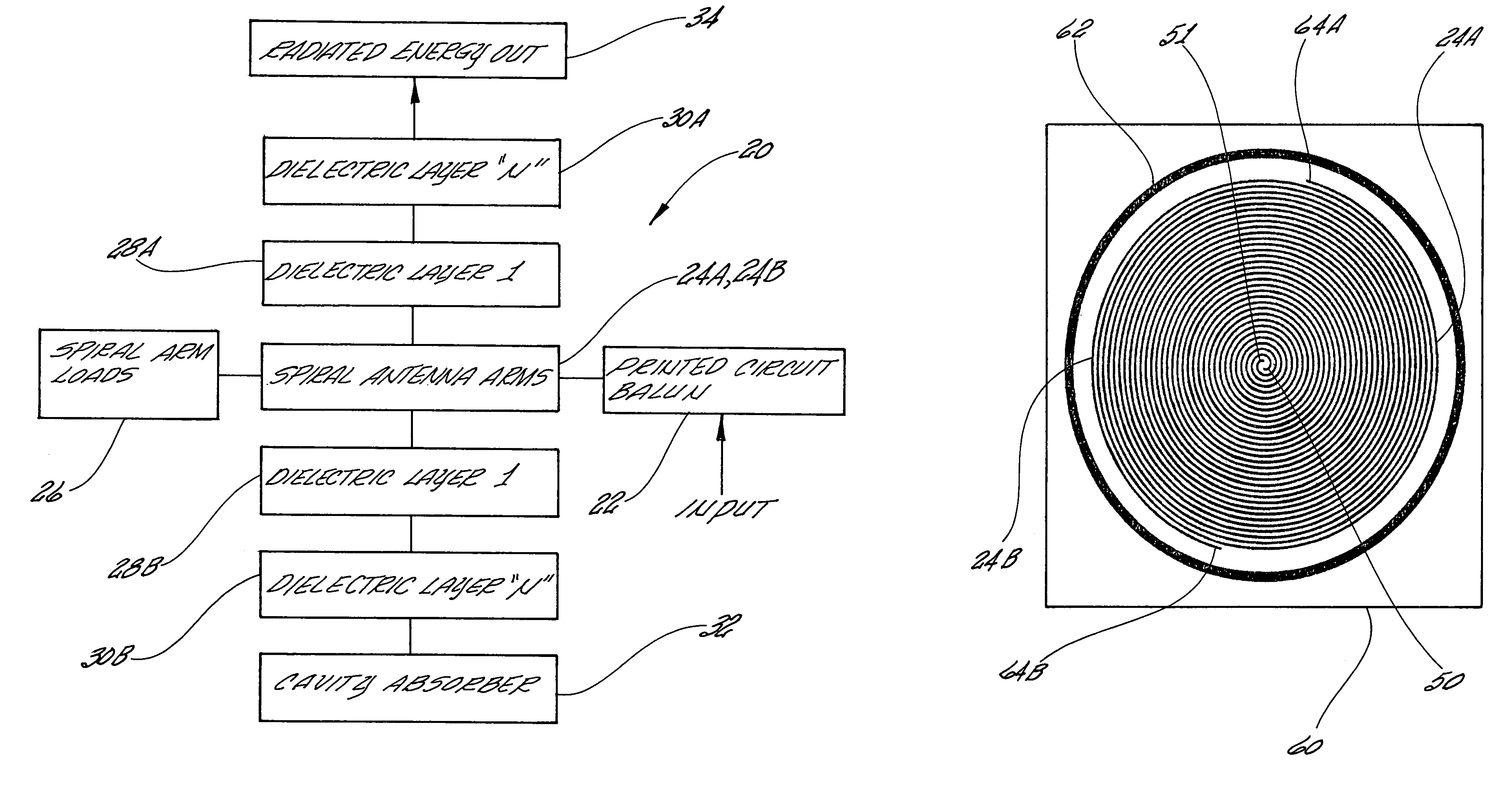Reduced size dielectric loaded spiral antenna
a spiral antenna and dielectric loading technology, applied in the direction of resonant antennas, radiating elements structural forms, protective materials radiating elements, etc., can solve the problems of limited design of spiral antennas, use of dielectric loading in previous designs with limited success, etc., to reduce the required antenna diameter, reduce the length of printed circuit baluns, and reduce the antenna input impedance
- Summary
- Abstract
- Description
- Claims
- Application Information
AI Technical Summary
Benefits of technology
Problems solved by technology
Method used
Image
Examples
Embodiment Construction
[0014]Referring to FIGS. 1, 3A, 3B and 3C, FIG. 1 is a block diagram illustrating the spiral antenna 20 comprising the present invention. The antenna can have either an archimedean spiral geometry as shown in FIG. 3C or a logarithmic spiral geometry. The spiral antenna 20 has a pair of spiral arms 24A and 24B mounted on a dielectric substrate 60 (FIG. 3C). The antenna arms 24A and 24B are respectively connected to a balun 22 (depicted in FIGS. 3A and 3B) by antenna signal arm inputs 50 and 51 which are positioned at the center of spiral antenna 20. Each of the antenna arms 24A and 24B of spiral antenna 20 is also connected to a spiral arm load 26 at a pair of load connection terminals 64A and 64B. As shown in FIG. 3C, the antenna arm signal inputs 50 and 51 are located at the inner end of antenna arms 24A and 24B, while the load connection terminals 64B and 64B are located at the outer end of antenna arms 24A and 24B.
[0015]The spiral arm loads 26 used in the preferred embodiment are...
PUM
 Login to View More
Login to View More Abstract
Description
Claims
Application Information
 Login to View More
Login to View More - R&D
- Intellectual Property
- Life Sciences
- Materials
- Tech Scout
- Unparalleled Data Quality
- Higher Quality Content
- 60% Fewer Hallucinations
Browse by: Latest US Patents, China's latest patents, Technical Efficacy Thesaurus, Application Domain, Technology Topic, Popular Technical Reports.
© 2025 PatSnap. All rights reserved.Legal|Privacy policy|Modern Slavery Act Transparency Statement|Sitemap|About US| Contact US: help@patsnap.com



